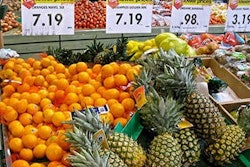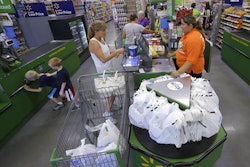Listeria in ice cream. Salmonella in peanut butter. Is it just me or do foodborne illnesses seem to be in the news at least a few times each week?
For organizations that have never experienced a recall before, keep up the good work. But for those of you who have had the misfortune of going through a recall, you know how costly even one small mistake can be.
And foodborne illnesses, it turns out, is a top reason for recalls throughout the food industry.
According to the Economic Research Service of the United States Department of Agriculture's recent report on "Cost Estimates of Foodborne Illnesses," foodborne illnesses cost the U.S. more than 15 billion dollars per year.
Billion?! Yes, billion.
The 15 pathogens studied account for more than 95 percent of the illnesses and deaths associated with foodborne illnesses in the U.S. Those food pathogens include:
- Salmonella
- Toxoplasma gondii
- Listeria monocytogenes
- Norovirus
- Campylobacter
- Clostridium perfringens
- Vibrio vulnificus
- Yersinia enterocolitica
- E. coli O157
- Vibrio
- Shigella
- Cryptosporidim
- Vibrio parahaemolyticus
- E. coli non-O157
- Cyclospora
And it's no surprise that deaths — 378 from Salmonella alone in 2013 — are the greatest costs incurred from food poisoning.
No organization wants to dish out the big bucks to put food-safety programs in place. But more and more food companies are beginning to understand the importance of putting measures in place to prevent such incidents from occurring, rather than responding to recalls.
The 2007 peanut butter salmonella outbreak that sickened more than 625 people in 47 states led ConAgra Foods to fork out $11.2 million to settle a federal charge — a sum that includes the highest criminal fine ever in a U.S. food safety case.
While there are many different technological advances in today's world that can help food companies prevent such adversity, traceability programs seem to always be the most tried and true.
Also see: Traceability: The Intersection of ROI and Compliance
Traceability requirements are found in a broad range of industries, including pharmaceuticals, medical devices and our beloved seafood. But while some traceability systems can be as simple as recording an individual product as it is stored and shipped from a warehouse, the fresh food traceability process is a little more complex.
Knowing where a food comes from — from farm to table — is critical for food processors, as you certainly don't want your consumers getting ill by your product or one of its ingredients. That's why having the ability to track, trace and find specific products throughout the supply chain is crucial.
The food supply chain is quite complex, including both domestically- and foreign sourced farms, processors, ingredients, manufacturers, packagers, distributors, shippers, stores and consumers.
Whew! That was a mouthful! But you get the picture.
In the end, successful traceability systems are the result of accurately and consistently keeping records.
In a recent exclusive article by Monika Pelz of Armanino's Food & Beverage Practice, Pelz noted some important things to consider when looking at your processes:
- How manual is your recordkeeping?
- How many different systems does your operation use?
- How well do your different systems interact?
Having a streamlined software system that ties together all aspects of a food processing business — including batch and lot tracking, quality control, labeling, recipe management, purchasing, sales, production and accounting — is considered the best practice.
Is it the priciest of the routes to take? Probably. But the benefits are likely to outweigh the costs, as traceability does so much more than just protect your consumers.
An integrated software that enhances your organization's traceability system offers brand protection, a consistent customer experience, better inventory visibility, error prevention, quality control and possibly even some reduced insurance premiums.
So is busting the bank to put a good traceability system in place worth it? You decide. Comment below or reach out to me at [email protected].






















